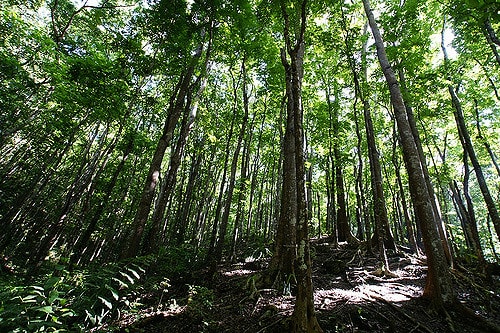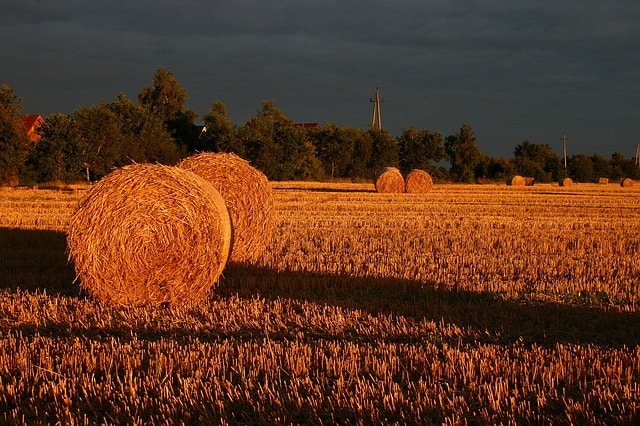Advantages and Importance of Reforestation

Reforestation is the consequence of deforestation which according to the United Nations Food and Agriculture Organisation, is a complete clearance of trees. Deforestation is usually planned and deliberate felling of trees and the land cleared is used for activities which are not related to the forest.
The act of re-growing trees in an area or land surface is reforestation. Reforestation is replanting of trees in a stretch of terrain which had for some reason lost its forest cover. Reforestation is a planned or deliberate movement to regrow vegetation lost due to human activity, natural calamity or sudden climate change.
With increasing environmental awareness, a global initiative has been taken to regenerate lost forest hamlets across the world.
Reforestation is not the same as afforestation, though both are directed towards propagating greenery. Afforestation is the endeavour to forest an area which originally had no tree cover. It is the effort to create a new forest in a previously unforested area or a part of land that was not under forest cover.
Reforestation on the other hand is repopulating an area which has lost its tree population. It is an initiative different countries are undertaking to maintain ecological balance. Various communities, NGOs, are relentlessly working towards reforestation.
In a recent address, on the 21st of March, 2016, earmarked as ‘International Forest Day’, the Secretary-General of the United Nations expressed concern about depletion of trees. And forests. He emphasized that forests are necessary if the planet and its inhabitants are to survive. He focused on the interdependence of forest, global climate stability and healthy living. The United Nations have designed ‘Sustainable Development Goals’ to safeguard forests because they provide resources for sustenance and survival.
Reforestation is a scientific process because it is not just planting trees. The system requires adequate knowledge of the climate, the landform, the soil type of the area. So to re-establish a forest community, it is important to select those trees or plant species that will thrive in the area. Then only can the forest cover be renewed.
With the turn of the century reforestation has become a global agenda. It includes taking account of the forests, woodlands, natural parks that have almost ceased to exist due to injudicious deforestation and assist in it recovering as much as possible the natural vegetation of that region.
Causes of Deforestation
Two primary reasons that led to mass scale deforestation are:-
Effect of Industrialization
We are facing a global environmental crisis since rapid industrialization changed the landscape of the earth. Agricultural lands were turned into factories disturbing the fragile ecosystem.
As machines replaced the plough, laborers replaced the farmers. This led to an influx of people from the villages to the recently formed industrial areas seeking work.
Large forest areas were literally cleared to provide housing for the workers, build roads and lay down railway tracks.
Thus forests began to retreat.
Urbanization
Another important reason that led to rapid deforestation is urbanization. It is an ongoing process. As more and more people moved away from the villages cities expanded encroaching forest land to build high-rises.
As industries expanded, new townships grew up, better means of communication became inevitable. Trees were felled and metallic roads, bridges, underground and surface railways were constructed. There was no plan to plant new saplings to make up the loss.
Importance of Reforestation
Checking biodiversity loss
Today we are standing at the threshold of an imminent crisis with rapid climate change, global warming and greenhouse effect. The earth is gradually losing its biodiversity as more and more animals are forced out of their natural habitat. The only way to check these adverse effects is reforestation.
Reducing carbon dioxide in the air
Human life is facing the ill effects of environmental crisis. Lack of trees and smoke released from factories, automobiles, has polluted the urban air. Reforestation is the simplest way to improve the quality of the air we breathe. Plants soak in carbon dioxide from the air, helps in precipitation and lowering surface temperature. If we rapidly lose vegetation the average temperature will continue to rise. Melting glaciers will raise the sea-level, and there will be drastic climatic changes.
Fighting global warming
Plants help to reduce the amount of carbon dioxide in the air and significantly decreases the presence of toxic gases like methane. So only through planned reforestation the effects of deforestation can be checked and global warming can be reduced. Forest are natural effective carbon sink. Carbon given out from burning fossil fuels is absorbed by the forests.
Restoring habitats
Deforestation and urbanization has been a constant threat to the flora and fauna of any area. We have lost numerous valuable plants and many animals are facing threats to near extinction. Reforestation will not only check environmental pollution but help to preserve wildlife. In addition to the climate benefits, reforestation has the potential to preserve endangered species. A recovering forest restores habitat loss and degradation and threats to species health.
Erosion and watersheds
It is evident that rapid felling of trees leading to deforestation of large parts of the globe, led to soil erosion. This in turn affected agriculture, landslides and flash floods. To reverse this situation, we need reforestation. The roots hold on to the soil and prevent run off of the top soil. This preserves the fertility of the soil. Forest restoration can reverse the damage done by erosion. Reforestation will revive the watersheds which are important aspects of environmental well-being.
Advantages of Reforestation
Oxygen Carbon dioxide balance
Reforestation activities promote the gradual depletion of CO2 from the atmosphere through absorption during photosynthesis. This in turn reduces its concentration in the atmosphere. The process of photosynthesis release oxygen and therefore helps to maintain the CO2/O2 balance. Less carbon dioxide means less pollution and less global warming.
Preventing soil erosion
Another environmental hazard caused by deforestation is erosion. The trees prevent or reduce soil erosion and water contamination. The roots of trees serve as natural nets spreading extensively into the ground to hold the soil in place. As soil runoff is prevented essential nutrients are retained and the soil remain fertile. Trees add manure to the soil from falling leaves and dried branches.
Maintain water cycle
Forests maintain the water cycle of the area by absorbing moisture through the leaves and roots. They are a natural storage system of rainwater and slows down the aridity of the atmosphere. Trees prevent fresh water lakes from losing moisture and drying up.
Transpiration
The trees release some of the water they absorb as water vapor from its leaves. This is the process of transpiration; this helps to restores moisture of the atmosphere and helps maintain the temperature in the local environment.
Economy
Forests have always been a great source of economy. The paper factory is dependent on wood pulp supplied from trees. Lumbering had been the main occupation of the people in the coniferous region. When a forest is properly managed and saplings planted regularly, then forests are sustainable source of timber.
Forests provide employment to the local people who gather forest products and turn them into handicraft. A global cottage industry with no pollution!






